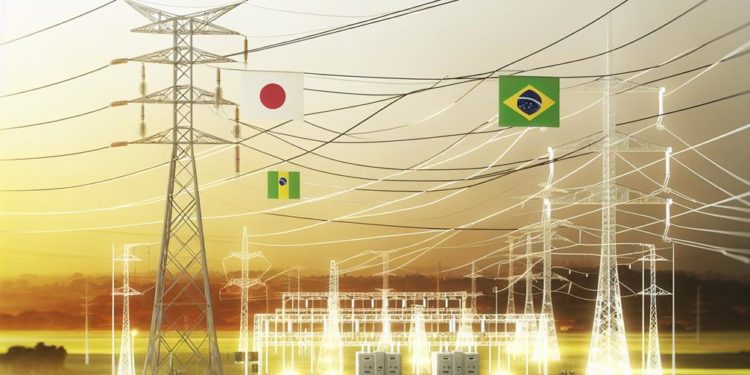You might think power transmission is just about moving electricity, but it’s far more intricate and crucial to our daily lives. Efficient and reliable power distribution hinges on a network of transformers, conductors, and substations working seamlessly. By incorporating advanced technologies like smart grids and HVDC systems, you can significantly reduce energy losses and enhance overall system efficiency. Imagine a future where power outages are rare, and energy flows effortlessly to meet demand. What strategies and innovations are making this vision a reality?
The Role of Transmission Systems
Transmission systems play a critical role in ensuring the efficient and reliable distribution of electrical power from generation sources to end-users. You need to understand that these systems are meticulously designed to handle various complexities and challenges inherent in power distribution. The selection of transmission routes is pivotal. These routes must be optimized for minimal power loss, reduced environmental impact, and cost efficiency.
By analyzing geographical and logistical factors, you can ensure that the power travels the shortest and most economical path to its destination.
Grid stability is another crucial aspect. As you know, maintaining a stable grid requires constant monitoring and precise control of power flows. Any imbalance can lead to voltage fluctuations, frequency variations, or even large-scale blackouts. Advanced technologies such as SCADA (Supervisory Control and Data Acquisition) systems and synchrophasors are employed to monitor and manage these parameters in real-time.
Ensuring grid stability not only involves technical interventions but also strategic planning to accommodate fluctuating demand and supply conditions.
Key Components of Transmission
Often critical to the functionality of transmission systems, key components such as transformers, conductors, insulators, and substations must be meticulously selected and maintained to ensure efficiency and reliability. Transformers are essential for adjusting voltage levels to minimize losses during long-distance transmission. You need to ensure that these transformers are optimally rated for your system’s voltage and load requirements.
Conductors, typically made of aluminum or copper, must offer low resistance and high conductivity. Selecting the right conductor size and material can significantly impact your system’s efficiency. Transmission towers, which support these conductors, need to be structurally robust and strategically placed to handle environmental stresses and maintain adequate clearance.
Insulators, made from high-grade insulating materials like porcelain or composite polymers, prevent electrical leakage and ensure the safety of the transmission lines. Porcelain remains one of the most widely used materials in high-voltage applications due to its mechanical strength and long-term durability—you might consider sourcing from a leading porcelain insulator manufacturer to ensure performance under demanding environmental and electrical conditions. You should regularly inspect these insulators for any signs of wear or damage to avoid potential failures.
Substations play a crucial role in controlling and directing the flow of electricity. They house transformers, switches, and other control equipment. Proper maintenance and periodic upgrades of substation components are vital for sustaining transmission system reliability.
Reducing Power Losses
Ensuring your transmission system’s efficiency and reliability involves not only selecting and maintaining key components but also implementing strategies to reduce power losses throughout the network.
One effective technique is incorporating smart metering. Smart meters provide real-time data on energy consumption, allowing you to identify energy wastage and inefficiencies. By analyzing this data, you can pinpoint areas where losses occur, enabling targeted interventions that minimize waste.
Another critical strategy is implementing demand response programs. These programs adjust the demand for power rather than the supply, reducing strain on the transmission network during peak times. Demand response can be automated using smart technology, which shifts or reduces electricity use during high-demand periods. This not only curtails power losses but also enhances grid stability.
Moreover, optimizing the configuration and routing of transmission lines can significantly mitigate losses. Techniques like high-voltage direct current (HVDC) transmission are more efficient over long distances compared to alternating current (AC) systems, reducing resistive losses.
Regular maintenance and timely upgrades of transmission infrastructure also play a vital role. By focusing on these areas, you ensure that your transmission network operates with minimal power losses, improving overall efficiency and reliability.
Enhancing System Efficiency
Frequently, enhancing system efficiency hinges on incorporating advanced technologies and best practices that optimize every facet of power distribution. You should focus on leveraging energy storage systems to balance supply and demand efficiently. By storing excess energy during low-demand periods and releasing it during peak usage, you can reduce strain on the grid and minimize energy waste.
Smart grids play a pivotal role in this optimization. These grids use real-time data analytics to monitor energy flow, predict demand patterns, and detect faults. By automating these processes, you can swiftly adjust the distribution network, ensuring reliability and efficiency. Integrating renewable energy sources into smart grids further enhances efficiency by utilizing clean, sustainable power.
You can also employ demand response strategies to modulate consumer consumption during peak periods. This involves incentivizing consumers to reduce their energy use, thereby lowering the overall load on the grid. Advanced metering infrastructure (AMI) supports these strategies by providing precise data on energy usage, enabling more informed decision-making.
Modern Transmission Technologies
Modern transmission technologies revolutionize power distribution by enhancing grid stability, boosting efficiency, and enabling the integration of renewable energy sources. Smart grids represent a significant advancement in this field. They utilize digital communication technologies to monitor and manage the flow of electricity from generation to consumption. You can achieve real-time adjustments to changing power demands, thereby reducing outages and improving reliability.
High Voltage Direct Current (HVDC) advancements further bolster the efficiency of long-distance power transmission. HVDC technology minimizes energy losses over vast distances compared to traditional AC systems. You’ll find HVDC particularly beneficial for integrating remote renewable energy sources like offshore wind farms into the main grid. These systems enable the seamless flow of electricity between regions with surplus power and those with deficits, thus balancing supply and demand more effectively.
Moreover, the integration of smart grids with HVDC systems creates a more resilient and adaptable infrastructure. You can leverage real-time data analytics to optimize power distribution and ensure that renewable energy sources are utilized to their full potential.
These modern transmission technologies not only enhance operational efficiency but also pave the way for a sustainable and reliable energy future.
Managing Demand and Disruptions
Effectively managing demand and disruptions requires sophisticated forecasting models and real-time monitoring systems to anticipate and respond to fluctuations in power usage. Accurate demand forecasting enables you to implement load balancing techniques that distribute power efficiently across the grid, preventing overloads and ensuring stability. You need advanced algorithms to analyze historical data and predict future demand patterns, thereby optimizing the allocation of resources.
Real-time monitoring systems play a crucial role in identifying and addressing disruptions as they occur. By continuously tracking grid performance, you can detect anomalies and initiate corrective actions swiftly. This involves deploying sensors and smart meters throughout the network to gather data on voltage, current, and frequency.
Contingency planning is essential for managing unexpected events, such as equipment failures or natural disasters. Developing and testing robust contingency plans ensure that you can maintain uninterrupted service. You should model various disruption scenarios and establish protocols for rapid response and recovery. This might include rerouting power flows, activating backup generators, and coordinating with emergency services.
Future Innovations in Transmission
Innovations in transmission technology promise to revolutionize power distribution by enhancing efficiency, reliability, and sustainability. One of the most groundbreaking advancements is wireless transmission. By eliminating physical connectors, wireless transmission reduces energy losses associated with resistance and wear in traditional cables. It employs electromagnetic waves, such as microwaves or laser beams, to transfer energy across distances. This technology can significantly streamline the infrastructure needed for power distribution, making it ideal for remote or hard-to-reach locations.
Another transformative innovation is the deployment of superconducting cables. These cables operate at extremely low temperatures, allowing them to conduct electricity with virtually zero resistance. By utilizing superconducting materials, you can achieve unprecedented levels of efficiency and capacity. These cables not only minimize energy dissipation but also support higher current densities, making them suitable for high-load applications in urban centers where demand is dense.
Both wireless transmission and superconducting cables represent significant strides towards a more resilient and efficient power grid. They address key challenges such as energy loss, infrastructure costs, and capacity limitations.
As you implement these technologies, you’ll be able to develop a more robust and future-proof transmission network, ensuring sustainable and reliable power distribution.
Benefits of Reliable Power Distribution
Reliable power distribution ensures consistent energy supply, minimizing disruptions and maximizing operational efficiency. When you have a stable grid, you reduce the chances of blackouts and power interruptions that can halt production lines, disrupt businesses, and inconvenience households. This stability is crucial for maintaining continuous operations in industries, ensuring that your equipment runs smoothly and efficiently.
The economic benefits of reliable power distribution are significant. By minimizing downtime, you can avoid the costly repercussions of halted production and missed opportunities. Reliable power helps businesses maintain steady revenue streams and reduces the costs associated with repairing equipment damaged by power surges or outages.
Additionally, a stable grid attracts investments, as companies are more likely to set up operations in regions where they can depend on consistent energy supplies.
Moreover, reliable power distribution enhances the quality of life by ensuring that essential services, such as hospitals, schools, and public transportation, operate without interruption. This reliability also supports the integration of renewable energy sources, which are essential for sustainable development.
Conclusion
In essence, you’re the conductor of an orchestra, ensuring the seamless symphony of electricity. By leveraging advanced technologies, smart strategies, and future innovations, you can minimize power losses and enhance system efficiency.
A reliable transmission system isn’t just about moving electricity; it’s about creating a sustainable, resilient energy future. So, keep fine-tuning your components and strategies, ensuring every note of power distribution is played with precision and reliability.











































































